5 things to do in Cartagena
Cartagena is a city located on the shores of the Caribbean Sea. Its colorful, charming streets make it the gateway to South America. It’s a melting pot, an open-air museum. Located in the north of the country, Cartagena is the capital of the Bolívar region. “La Heroica,” as it’s known, encompasses several archipelagos and islands that are paradises for a true rest.
Cartagena adds to its charms with its vibrant nightlife, cultural festivals, and lush landscapes. Days feel like nights, and nights feel like days. The city’s beaches invite you to explore, relax, and have fun with the refreshing breeze and warm sea waters.
Likewise, the weather in Cartagena de Indias is very pleasant, as its tropical climate allows you to enjoy its beaches and other attractions. The average temperature in Cartagena year-round is 27°C. An ideal climate for exploring the walled city, its restaurants, and other iconic sites in the city.
Cartagena also boasts an excellent culinary offering and a significant hotel and tourist infrastructure.
This fantastic destination holds the secrets of history in its walled city, on its balconies, and on its narrow cobblestone paths, which inspired Gabriel García Márquez, winner of the Nobel Prize for Literature in 1982.
Framed by a beautiful bay, Cartagena de Indias is one of the most beautiful and best-preserved cities in the Americas; a treasure that, today, is one of the most visited tourist destinations in Colombia.
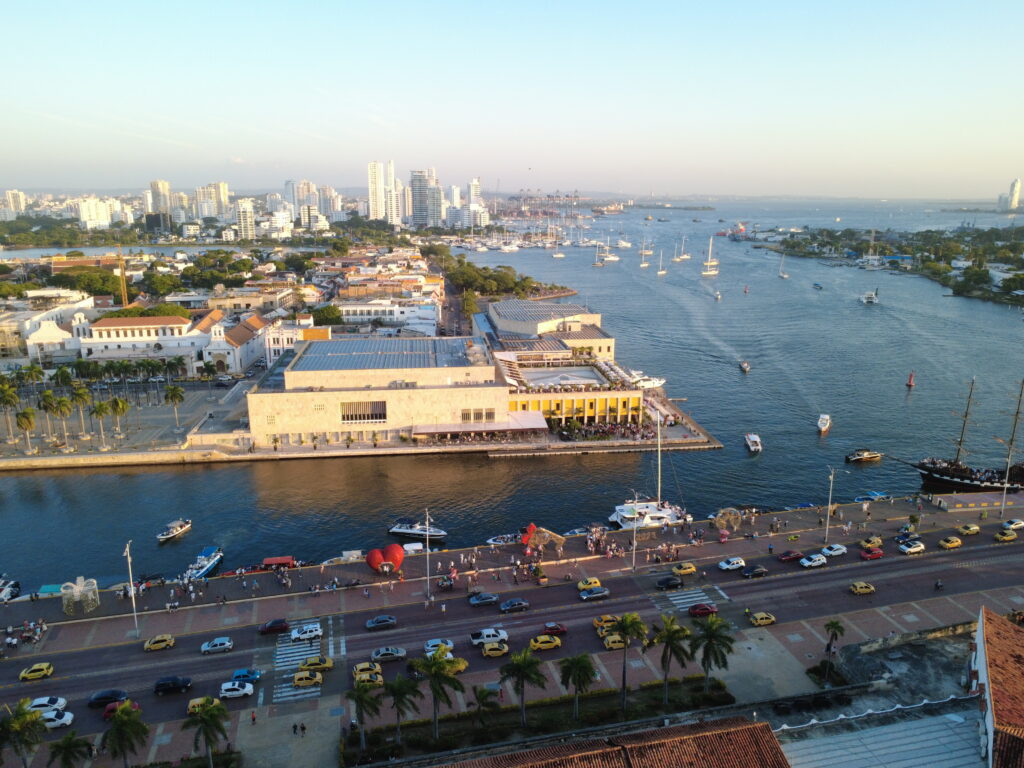
- City Tour
For four hours, you’ll explore Cartagena with a guide who will tell you about its history and culture, as Cartagena is now the most visited city in Colombia.
The tour begins at the Convent of La Popa, built by the Augustinian Recollects in the 1600s. This is the highest point in the city, offering a magical view of Cartagena Bay. Visitors will be shown the different areas of the city and will learn about the Battle of Cartagena, one of the main attacks the city endured in 1741. You will then visit the interior of the colonial house to appreciate its colonial architecture, featuring wooden balconies, coral stones, flowers, and a cistern in the center of the courtyard that was used to store rainwater during the colonial era. To one side is the chapel with a wooden altar covered in 18-karat gold slabs. In the center, you can see the Virgin of Candelaria, patron saint of Cartagena, who is taken out every February 2nd for the procession from the base of La Popa Hill.
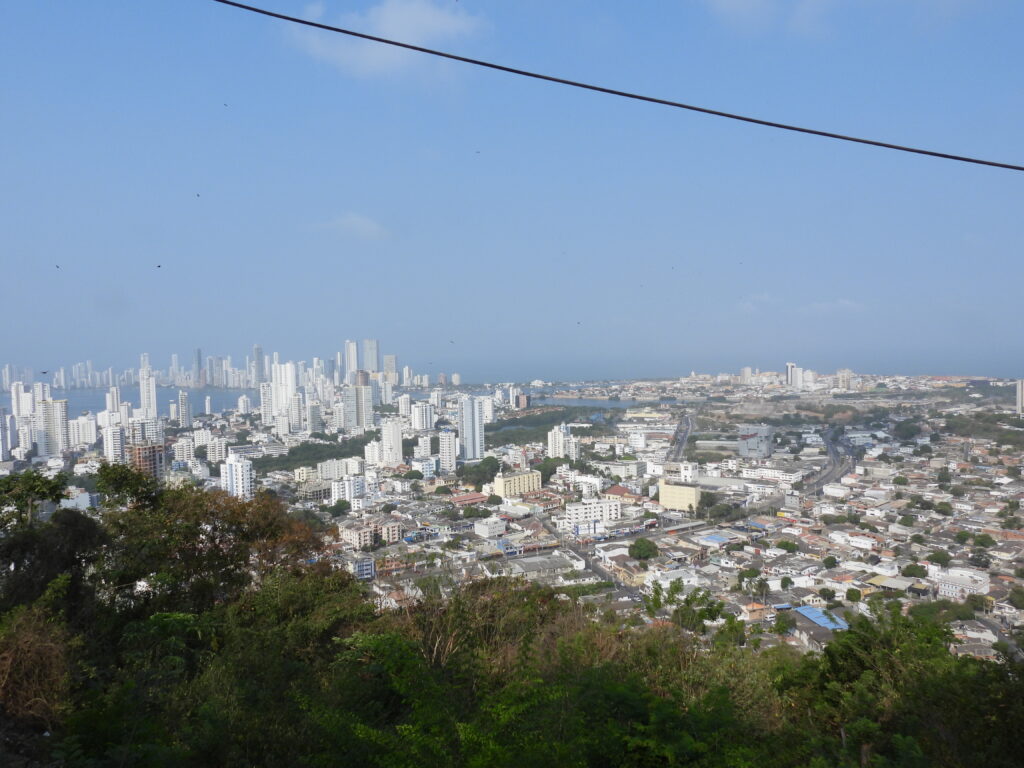
The next stop is at the Castle of San Felipe, the largest fortress in South America, very important to defend the city from various pirate attacks and the Battle of Cartagena with the British, we will make an ascent by the ramps with different stops to tell the story, construction began in 1657 the upper part where the Bonete is, which served for 30 soldiers, after several attacks the Spanish crown decided to expand it, by the arrival of the British it had a capacity for 300 soldiers, at the first stop we will observe a vertical cannon that served as a pulley to raise food and war material, to one side we can also appreciate the original materials that were used to build the wall (coral stones), a little higher we will appreciate the loopholes where the cannons were placed, the false paths and the loopholes “cone-shaped openings” through which the enemy was shot, the ascending journey continues to reach the top of the castle with an incredible view of the Cartagena bay, There, a map from the colonial era is displayed, explaining the Battle of Cartagena, along with the strategies used to defend the city.
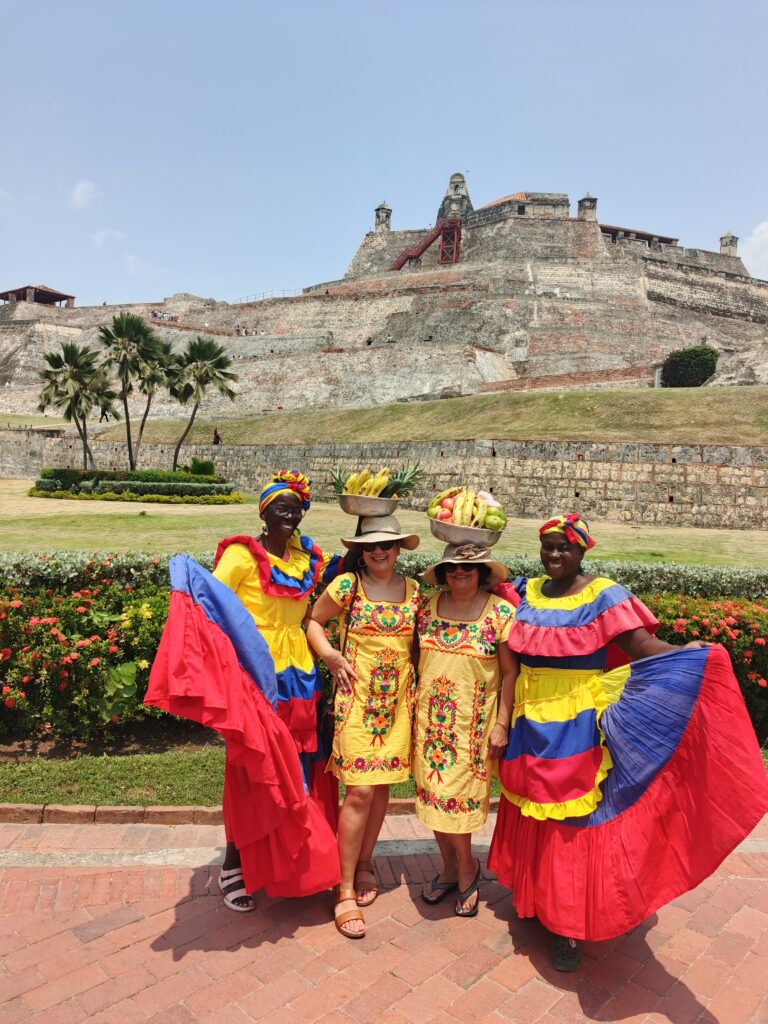
During the descent, you can explore some tunnels where you can see the barracks that were used to store food and war materials. Sometimes they functioned as prisons and dormitories for soldiers. On one side, you cross two bridges, which in colonial times were made of wood and could be raised when enemies approached.
The next stop is the Getsemaní neighborhood, one of the most colorful neighborhoods in the world, with its many graffiti, murals, and umbrella-shaded streets—perfect spots for taking beautiful photos. This was a slum, a working-class neighborhood during the colonial era. Most of the colonial houses are low-rise, without balconies. The city’s main market operated here until 1980, when it was moved to Bazurto. The neighborhood fell into decline, and 30 years ago, it was dangerous to visit. At that time, 80% of the population were locals. 15 years ago, the community came together to create graffiti and murals. Today, it’s one of Cartagena’s traditional and safe neighborhoods for tourists. Today, 20% of the population is local, resisting a process called gentrification. Every day, more and more foreigners arrive to displace the locals.
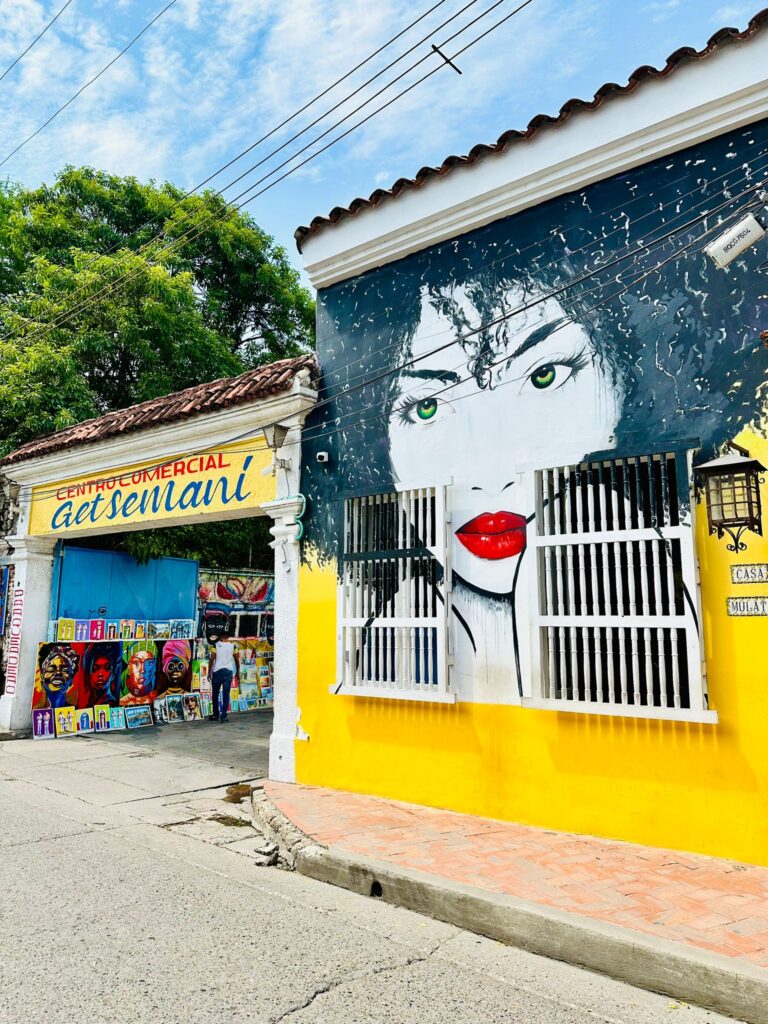
The last stop is at the walled city where we will walk through several streets and squares to learn about the history and architecture, we pass by the clock tower which was the main entrance in colonial times, inside this is the slave square where slaves were sold in chains to work on the sugar plantations and gold mines, in this square we can also see the tall colonial houses of 3 floors with wooden balconies, on the first floor was the stables and the servants, on the second floor lived the owners and the third floor was for visitors, further on we pass by the Customs square, who collected taxes, today it houses the mayor’s office, on one side of the square we see a tall white building, different from the colonial style, which was built in the 1920s, which is why Cartagena was declared a World Heritage Site to protect the historical value of its old houses. Continuing with the tour we arrive at the Plaza San Pedro Claver, with its beautiful church that has a limestone facade, this was a Jesuit priest who helped slaves, he was the first person to say that slaves were human, some consider it as the beginning of human rights, on one side of the plaza you can see one of the most famous views of Cartagena, the colonial houses with wooden balconies and in the background the dome of the main cathedral.
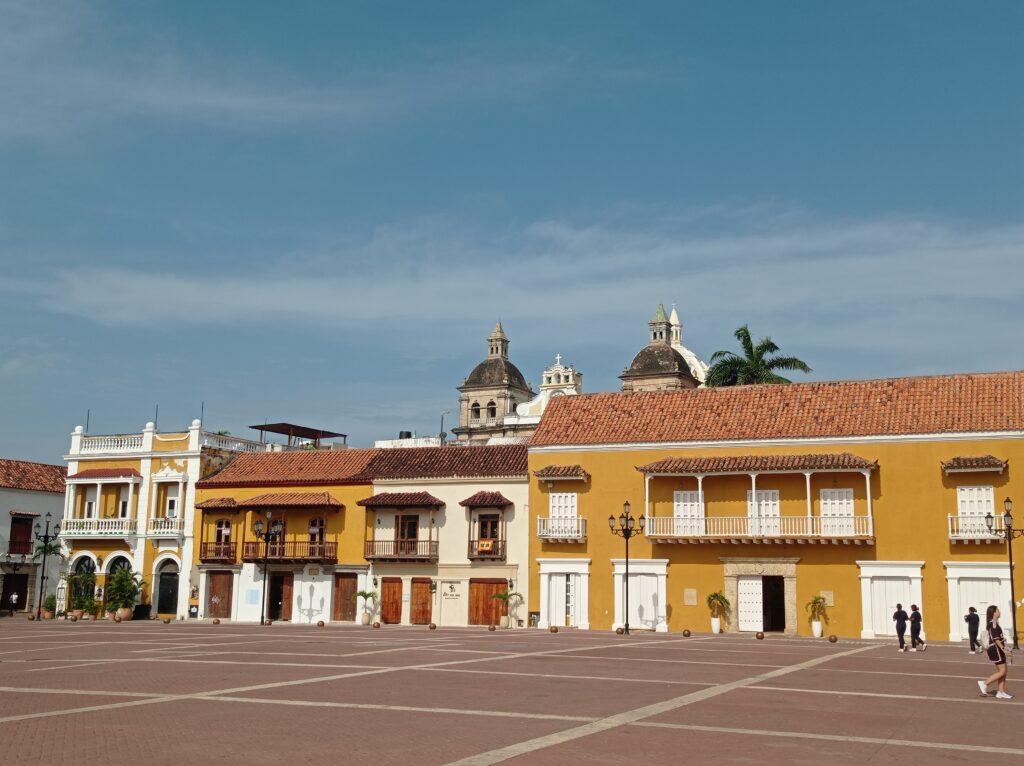
A little further on we arrive at Bolívar Park, where the Inquisition Palace is located, which in colonial times persecuted heretics, blasphemers, and witches. On the other side is the Zenu Gold Museum, 6,000 years of indigenous heritage. In this colonial house, there are interactive rooms with gold figures that show the relationship of the indigenous people with their territory. In the center of the park, we can see the statue of Simón Bolívar riding his horse. The liberator of 5 nations was born in Venezuela. As a young man, he moved to Europe to study and was motivated by the French and American revolutions. Further ahead, we pass by the Santa Catalina de Alejandría Cathedral to reach Santo Domingo Square, where we find the Santo Domingo Church and, on a corner, the San Alberto Café, one of the best cafes in the historic center. From this point, we finish the tour to return to our respective hotels.
2. Rosario Islands
The Rosario Islands, located about a 45-minute boat ride from Cartagena, are a tropical paradise famous for their crystal-clear waters, white-sand beaches, and spectacular marine life. It’s one of the top destinations to escape the hustle and bustle of the city and enjoy the Caribbean at its finest.
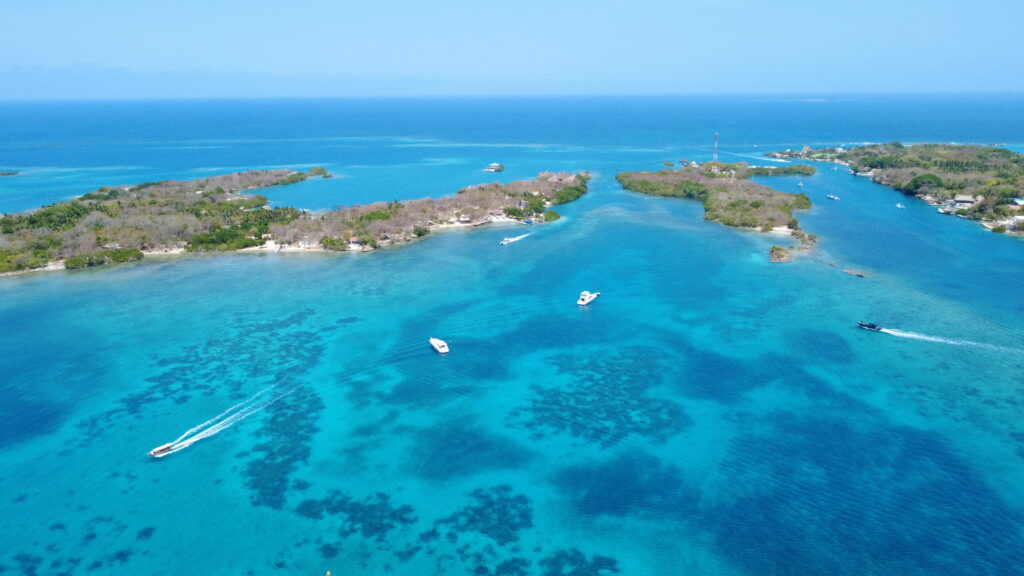
Activities include:
- Snorkeling: See colorful fish, live coral, starfish, and even sea turtles.
- Island-wide boat tour: Explore islands like Isla Grande, Isla del Pirata, Isla Cholón, and Playa Blanca.
- Visit the oceanarium: San Martín de Pajarales Island has an oceanarium, where you can see dolphins, sharks, and local marine life. There are also educational shows and animal feedings. Ideal for children or those interested in marine biology.
- Relax on private beaches: Some islands have boutique hotels or eco-hotels that offer day passes with access to private beaches, pools, massages, kayaking, a traditional lunch (fried fish with coconut rice), and drinks. Perfect for completely disconnecting.
3. Visit to the Palenque of San Basilio
Known internationally as the first free people in the Americas. More precisely, they finally achieved their freedom at the beginning of the 18th century, after almost 100 years of tireless struggle. Located 55 kilometers from Cartagena de Indias, its inhabitants are a little piece of Africa outside of Africa, where the past speaks to the present. A resilient people, a people built on African tears and blood. They are a people who fought and will continue to fight to preserve their cultural traditions, which are a national legacy. In the colonial era, it was said that there were approximately 20 different languages spoken by African tribes; however, the Palenque language is the only one that has survived the passage of time. And although many of their voices were silenced, today we dust off their legacy, which has been etched in time.
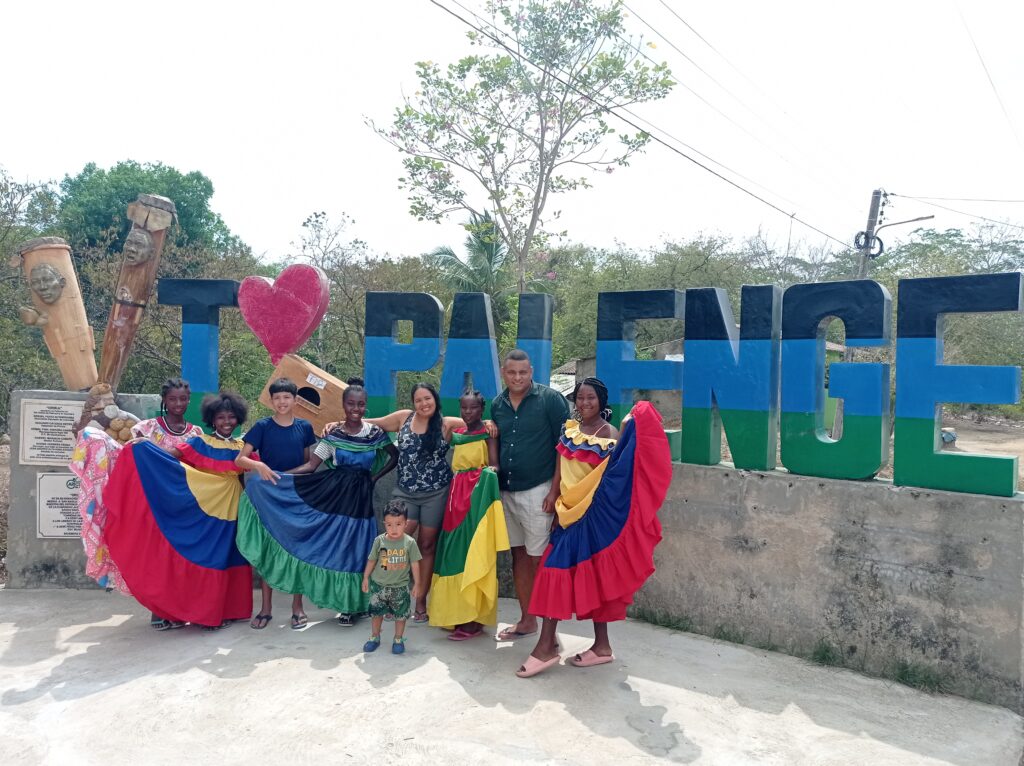
During their visit to this beautiful village, visitors will have the opportunity to take a short tour of the house museum, a perfect example of the characteristics of an ancestral home, built with easy-to-find and affordable materials. Yet, at the same time, it’s very fresh, with its high roof made of palm, mud, and cane. Several murals were recently created in honor of African descent, in honor of African blood, in honor of their resilience, heroism, bravery, and strength, usually written in the Palenque language. You can also take boxing classes in a community hall, as well as enjoy a group performance by the village’s young folk groups, who express their love and passion for their African roots through music.
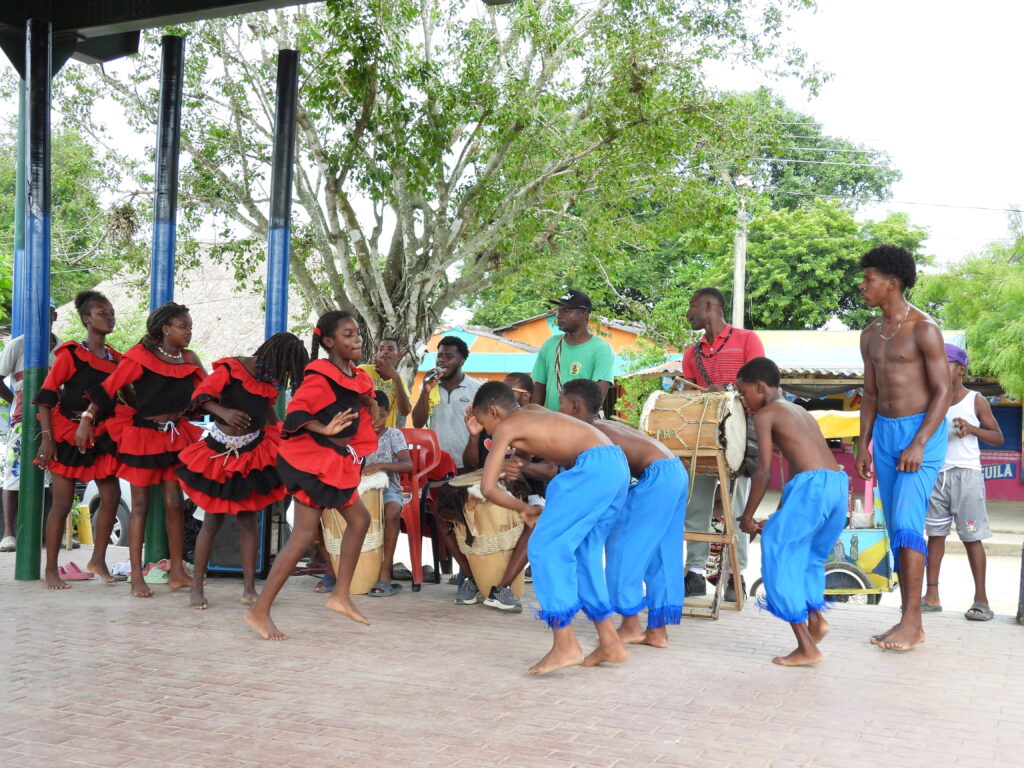
A visit to Doña Ruperta’s house is a must. She is highly recognized in San Basilio and Cartagena and won an award in China for her cookbook. She is a leading woman in her community, where she demonstrates traditional Palenque cuisine, cooking with firewood, and making typical regional sweets in her backyard.
4. Mangroves of La Boquilla
Better known as the international airport for birds, La Boquilla is a small Afro-descendant fishing village located on the shores of the Caribbean Sea, separated by a sandbar, 7 km east of Cartagena’s historic center. It has approximately 20,000 inhabitants. Enjoy calm waters near the Walled City, yet you can enjoy that moment of silence amidst the mangrove trees. This area is home to one of the city’s largest mangrove forest patches, in the Ciénaga de la Virgen, which does not have an official conservation status. An association of 25 fishermen care for this natural space and does not allow the killing of animals or the cutting of trees. Aboard a small, four-person, non-motorized canoe, propelled by the fisherman with a pole, we will tour the various mangrove swamps and canals for approximately an hour to observe the more than 250 species of birds that have been reported in the area, including herons, ducks, cormorants, kingfishers, pelicans, gulls, and plovers.
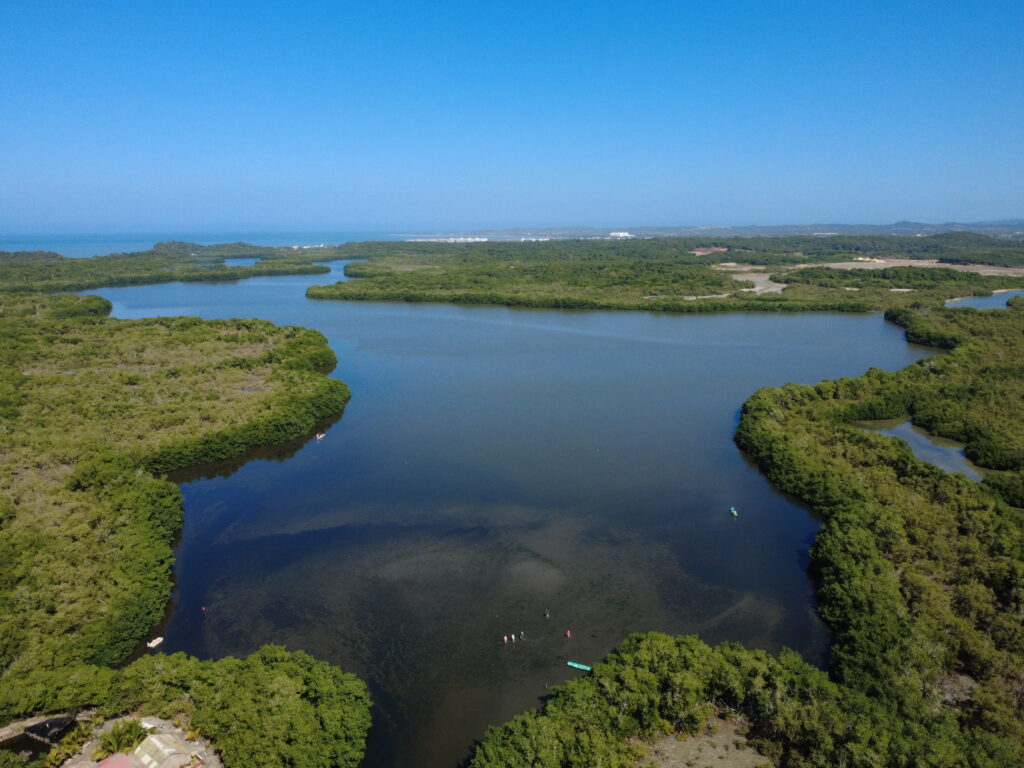
Local fishermen along with the professional guide explain the importance of mangroves, these protect coastal populations from strong winds, tropical storms, prevent soil erosion, capture CO2 from the atmosphere and provide shelter and food to many animals, even the roots of the mangrove trees function as nurseries, where fish enter from the sea, through natural mouths, to spawn and leave their eggs in the roots of the mangroves, until they reach sexual maturity to reproduce, further on you pass through the tunnel of love where you can see, in the upper part of the trees, some termite nests, where parrots sometimes nest.

Later, we will witness the traditional fishing technique used by local fishermen. First, they will explain how to set a trap to catch crabs. Bait them and lower them to the bottom of the swamp. The crabs are equipped with a line and a plastic bottle that acts as a buoy to identify their location. Then, the fisherman throws out the cast net and makes a few casts to try to catch fish such as sea bass, red snapper, black crappie, and sardines.
The experience concludes with the planting of red mangrove seeds to help increase the tree population and as a way of thanking life for allowing us to share these moments of connection with nature. Upon returning to the community dock, we will have a delicious cold coconut and the opportunity to use the restrooms. Then, we will bid farewell to the local fishermen and board the shuttle that will take us back to their hotels.
5. Totumo Volcano
It has a small elevation of only 20 meters above sea level, located approximately 50 kilometers from Cartagena. It is a natural wonder, adjacent to a freshwater swamp, where visitors can take a dip after enjoying a delicious relaxing massage in the volcano’s crater. It is so named because it is surrounded by many Totumo trees.

The volcano’s mud has many natural benefits for the skin, as this mud has approximately 51 minerals. This makes the mud somewhat thick, and people cannot sink, only float, so its composition is not just water and small stones.
Ideal for viral photos and videos due to the unusual nature of the activity. The contrast between the natural landscape, the mud, and the laughter of the visitors creates unforgettable moments.

Ready for a unique adventure? Book your visit tour with Betoma Tours and discover why Cartagena is a favorite destination for international visitors!
📧 Contact: info@betomatours.com
📞 Phone: +57 3026626358
📸 Instagram: @betomatours







